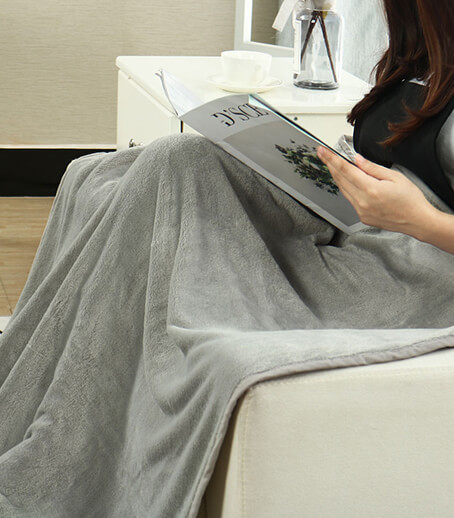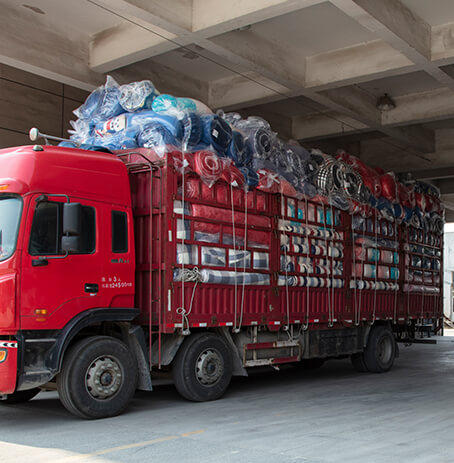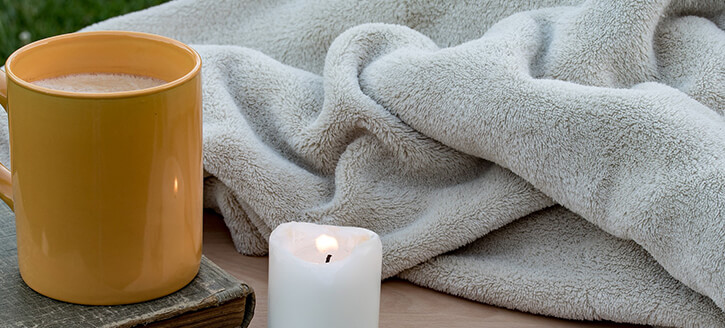Due to the intensified market competition, printing and dyeing factories are required to develop in the direction of small batches, multiple varieties and fast delivery. However, coral velvet is produced under such a market economy, which is in line with the needs of the development of modern markets. As we all know, the dyeing process of polyester bleached coral velvet fabrics is much simpler than that of T/C coral velvet and printed coral velvet fabrics, and its profit is considerable. The finished products dyed have a large consumer market. Therefore, it is favored by customers and consumers.
However, polyester coral velvet is only one of many coral fleece varieties, the types are: A, B double-sided coral velvet, A, B single-sided coral velvet. Specifications are: 100D/144F, 150D/144F, 150D/288F, 130D/144F. Among them, for single-faced coral velvet, A-side coral velvet is better than B-side coral velvet. Because the A side coral fleece is different from the B side coral fleece, the A side coral fleece belongs to the front weaving of the loom, and the B side is the reverse side. Because at the time of the sectioning, only the frontal hair height is ignored, regardless of whether the hair height of the back side is neat, resulting in a certain difference in the woven fabric. However, the double-sided coral velvet is more expensive than the single-faced coral velvet fabric, which literally means that the double-sided coral velvet is more expensive than the single-sided coral velvet. Throughout the process, double-sided coral velvet has an important process - single hairing than single-sided coral velvet. Double-sided coral fleece needs to be pulled to achieve the reverse and fluffy effect, while single-sided coral fleece does not need to be pulled, so the processing costs of the two are also very different. Generally, the processing cost of double-sided coral fleece is higher than that of single-sided coral fleece. About 7%.
In view of the large market for finished products of coral velvet, the coral velvet industry is on the rise in recent years. Therefore, merchants are constantly innovating to design more coral fleece products. For example, gloves, nightgowns, fashion scarves, bath skirts, bathrobes, blankets, slippers, etc., which are common on the market. Many products are made from coral velvet. This is due to its high fiber density, coral-like shape, and a soft coral-like posture. Coupled with its fine texture, no lint, no ball, no fading, excellent water absorption, no irritation to the skin, no allergies, beautiful appearance, it is very popular among consumers.
Among the dyed coral fleece fabrics, most of the dyed products of the polyester polyester 150D/288F coral fleece are mainly due to the fineness of the silk and the small flexural modulus, so that the fabric has excellent softness. Although there are so many advantages, everything has two sides and shortcomings, and its permeability is not very good. Take the blanket, the double-sided coral fleece is hairy because of its front and back, and the effect of the fluff is basically the same. The weight of the square is generally 280g, 300g, 320g, which is relatively thick, so the fiber The density between the two is relatively small, and the air permeability is worse than that of a single-sided felt. In view of this type of problem, there is no way to make it effective.
However, the entire process of dyeing plays a decisive role in its characteristics. Of particular importance are: dyeing and finishing. In dyeing, the choice of dyes and their combination should be selected, the selection of printing and dyeing auxiliaries (pH should be controlled at 4.5~5.5) and heating rate; in finishing, soft, napped, combed, sheared, shaken , stereotypes, each process must be strictly standardized operation, in order to prevent the quality of the finished product.
The following is the entire process of dyeing all-poly coral fleece fabrics. Detailed analysis of each process is carried out to study the attention points, effects and solutions of each process, so that the whole process can be better optimized!
General process White fabric -- unwinding -- stitching -- predetermined type -- enveloping -- staining -- spinning -- dehydration -- drawing -- drying -- drawing -- singing -- shearing -- shaping -- Stereotype -- finished product roll
Coral fleece has a soft bottom plate and a hard bottom plate. The soft bottom plate generally adopts 100D/48F semi-dull polyester yarn as the bottom wire; the hard bottom plate adopts 100D/96F low elastic wire as the bottom wire. The fabrics produced by the two types of filaments have different elastic forces.
The grained coral fleece fabric is woven by a warp knitting machine and has a two-layer structure, which is split into a single-faced coral fleece blank. Due to the influence of the profiler, there are differences in the height of the pile between the A side and the B side of the grey fabric, and there are also woven woven fabrics such as sticky hair, weaving vertical strips, parking bars and broken wires, which affect the quality of the finished product.
Therefore, the preliminary inspection of the grey fabric should be carried out before the predetermined shape, and the predetermined shape should be pre-formed before the alkali reduction of the blank fabric, so that the coral filaments of the coral surface are arranged neatly, vertically, and loosely, and the structure of the filament is tight and stable. After the unfinished grey fabric is dyed and finished, the coralline formed by the coral surface is curved, disordered, curled, and flattened, and the style of coral fleece is lost. The predetermined shape can also effectively prevent the occurrence of alkali reduction and the curling caused by the action of the dyeing nozzle.
Alkali reduction: After the predetermined shape, the alkali reduction is generally determined according to the condition of the coral coral of the grey cloth. When there are more microfiber network points in the coral filaments, the coral surface is clear, and the alkali-low concentration or the alkali reduction can be performed to ensure the style of the coral fleece. On the other hand, when the microfiber network as the coral filament has fewer points, and the coral silk has a poor degree of cohesion, the sharpness is not obvious, or the weaving profile is generated to produce sticky hair, the alkali reduction is performed.
Dyeing: dyeing with a high temperature and high pressure overflow dyeing machine. The product selected from the upper walking cylinder is more stable than the lower walking cylinder, has a good feel, is easy to brush, and has no ant nest on the coral surface. The soft finishing of soft-finished coral fleece is soft and gentle, and can be carried out in different ways according to the requirements of the customer. The rolling yield is high, the production is convenient, and the cloth head is reduced, but the hand feel is worse than the dipping; the dipping is good and easy to brush, but the process time is long, the output is low, and the bath ratio needs to be strictly controlled, especially to prevent The production of silicone oil spots. The bristles can be raised on the 24-roller and 26-roller pilling machines. The tension should be adjusted according to the feel of the grey cloth, and the gear size should be changed. Generally, the light weight is heavy to ensure that the brushed fabric does not hurt the bottom silk and the suede to achieve thick and dense.
Comb Shake: According to the style of the sample, adjust the number of combs and the height of the shear and the time of the shake.
Finished finishing of the finished product: mainly to control the width and weight of the product, so that the product achieves a certain stability, which is conducive to cutting and sewing.
Pre-dyeing process
1 White fabric unwinding: Unwinding is the head of the whole process. This process seems simple, but it has certain safety hazards. When unwinding, pay attention to slanting and drawing.
2 seam head: When sewing the head, pay attention to the joint of each box cloth, which is flat seam. This is mainly because it is flexible and convenient to use, the seam head is firm, and the amount of thread is small. It is suitable for all kinds of machine trolleys. Sewing between the cars. However, the use of flat stitching layers overlaps, and it is easy to produce cross-bar and other cramps. Therefore, when the head is sewn, the cloth head is not too wide, about 10~15cm.
3 Pre-type: Pre-type refers to the direct setting of the white fabric (temperature is 190~230 °C), so that the fabric is in a relatively stable state when it starts dyeing and finishing. The arrangement of the shaping process has the advantage that the fabric is not easy to be viscous in the dyeing process, has a good style, and is not easily deformed and creped during subsequent processing.
The style of the fabric is affected by the relaxed shrinkage of the fabric after the dry heat predetermined pattern. Because the wrinkles are eliminated, the uniformity of the molecular structure arrangement is improved. Tension must be applied to the fabric, and the increase in tension will reduce the enthalpy effect, decrease the degree of activity, and deteriorate a series of properties such as softness, resilience, and fullness. In order to avoid the disappearance of the 绉 effect and affect the fabric style, the general predetermined width is 3~5cm wider than the finished product, the tension of the front guide roller is completely relaxed, and the appropriate overfeed (generally controlled within ±40%) is used to maintain the warp. The buckling improves the style of the fabric. The predetermined temperature is generally controlled at 165~200 °C. The setting time is determined based on fiber heating time, heat penetration time, fiber macromolecular adjustment time, and fabric cooling time. As long as the tension of the shaping is required to meet the flatness of the fabric, the appearance can be ensured, so as not to affect the texture of the fabric.
When ordering, pay attention to not dripping oil, tearing the edge, the length of the door should be good, the weight should not exceed ±10g, and the second should pay attention to whether there is a wind, the color, the color Whether it is sticky or not, the resolution of these problems must be cautious and timely. Always pay attention to whether the equipment is in good condition, whether the tension, temperature, and cloth speed control are appropriate. And when the wind tunnel is produced, it should be seen at a small wind level. The general wind level is about 1500 rpm, and one side should pay attention to the wind tunnel.
4 edging: the operation of the edging is similar to that of the seam head. It adopts the outer edge of the hair, and the width is about 3~5cm. The worker must strictly demand himself during the edging process. It is forbidden to increase the edging width for convenience and speed. The process is mainly for the next process to prevent curling during dyeing.
Process points and precautions
1 Generally, the low-temperature type is used for dyeing light color, the medium temperature type is used for dyeing medium color, and the high temperature type is used for dyeing dark color;
2 Different disperse dyes have different sensitivity to acid, affecting the color depth and shade, and serious color change, color flower, etc., so the PH value of the dye solution must be adjusted, the pH value is 4.5~5.5, the dye solution In the most stable state;
3PET fiber dyeing, dyeing temperature, stability control is the key, the starting temperature is controlled in light color 70~80 °C, medium color 80~85 °C, dark color 85~90 °C;
4 After finishing, the temperature and rate of each process should be strictly controlled.














